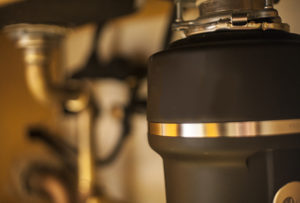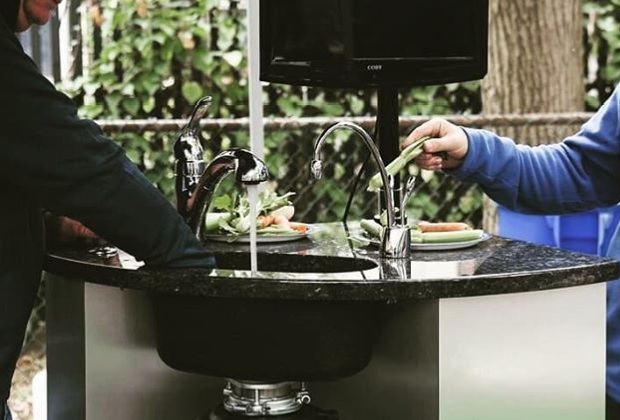A Healthy Diversion
As part of the NYCHA 2.0 Waste Management Plan and related efforts to better manage waste across the Authority, NYCHA’s Sustainability Programs Department coordinated the installation of in-sink food waste disposers at three initial developments: Meltzer Tower, Baruch Addition, and Two Bridges in the Lower East Side. Food waste disposals reduce the amount of organic materials in residential waste streams, which reduces local rat populations while helping the environment.
“Each NYCHA apartment generates about five pounds of trash every day, a third of which is organic material,” said Katy Burgio, Program Associate in the department, which is part of the Capital Projects Division. “If we can start to divert any amount of the 146 tons of organic waste generated each day, it would improve environmental conditions for the entire region. The disposals send the ground-up food waste to water resource recovery facilities (WRRF) operated by the NYC Department of Environmental Protection (DEP), which convert the organics into a sustainable source of renewable energy.”
The disposal unit itself is simple, safe, and easy to use: turn on the water faucet, switch on the unit, then feed the food gradually down the sink into the disposal; after its all ground up, let the water flush the drain again for a few seconds.
 All food waste put into the disposals are removed from the development through the sewer system, eliminating a critical food source for rats from trash collection sites. And because the organic waste is processed in WWRFs, it will not end up in a landfill (where it will produce methane, a greenhouse gas that is 30 times more potent than carbon dioxide). Food decomposition in landfills can also contribute to the creation of leachates, which can seep into and contaminate ground water. By diverting organic material from landfills, the food disposals are one strategy NYCHA is using to meet the City’s goal of sending zero waste to landfills by 2030.
All food waste put into the disposals are removed from the development through the sewer system, eliminating a critical food source for rats from trash collection sites. And because the organic waste is processed in WWRFs, it will not end up in a landfill (where it will produce methane, a greenhouse gas that is 30 times more potent than carbon dioxide). Food decomposition in landfills can also contribute to the creation of leachates, which can seep into and contaminate ground water. By diverting organic material from landfills, the food disposals are one strategy NYCHA is using to meet the City’s goal of sending zero waste to landfills by 2030.
DEP-run WWRFs harvest the methane generated from the processed sludge to fuel their facilities, and they are working on cleaning the gas to sell it to National Grid, Ms. Burgio said. Any residual solids from the facilities can be converted to fertilizer for agricultural use, NYC Parks enrichment, or terrace gardening.
The Sustainability Programs team is working on finding additional funding resources to implement this program agency-wide and advance NYCHA’s Waste Management Plan, a comprehensive approach to make the Authority’s buildings and grounds visibly clean and free of pests by 2025.







